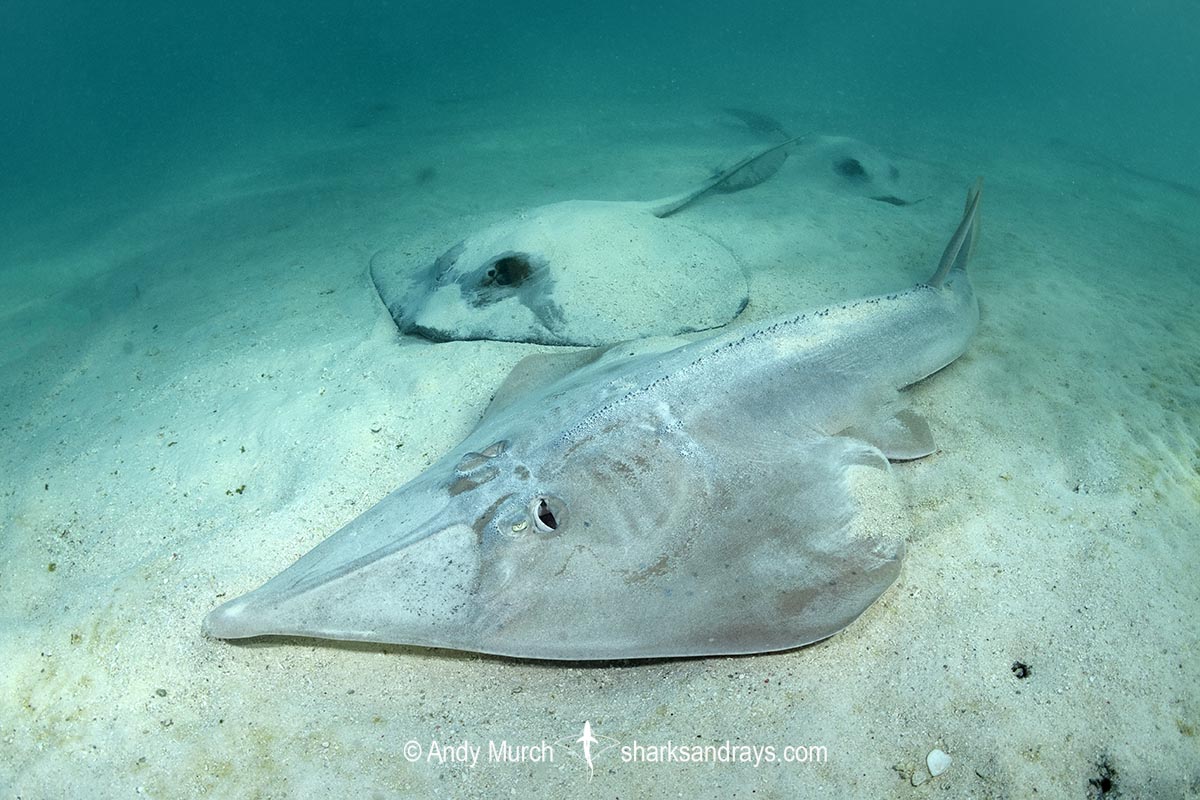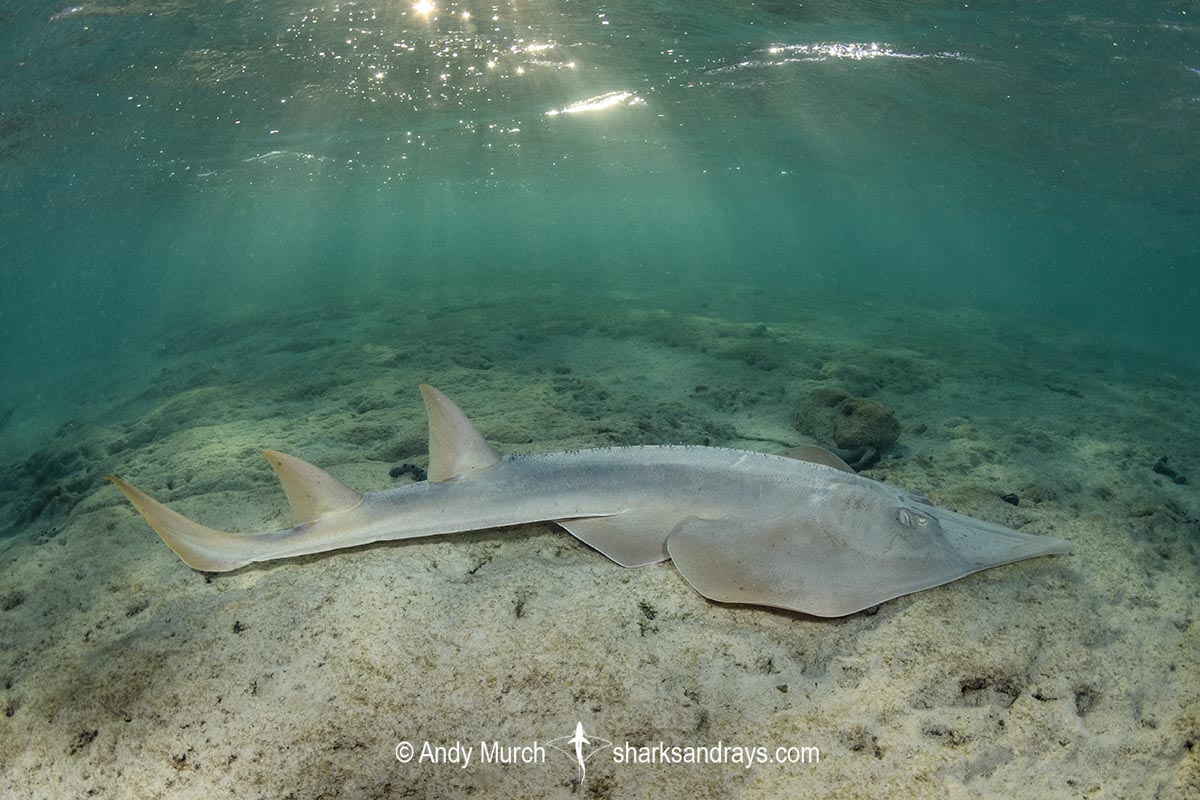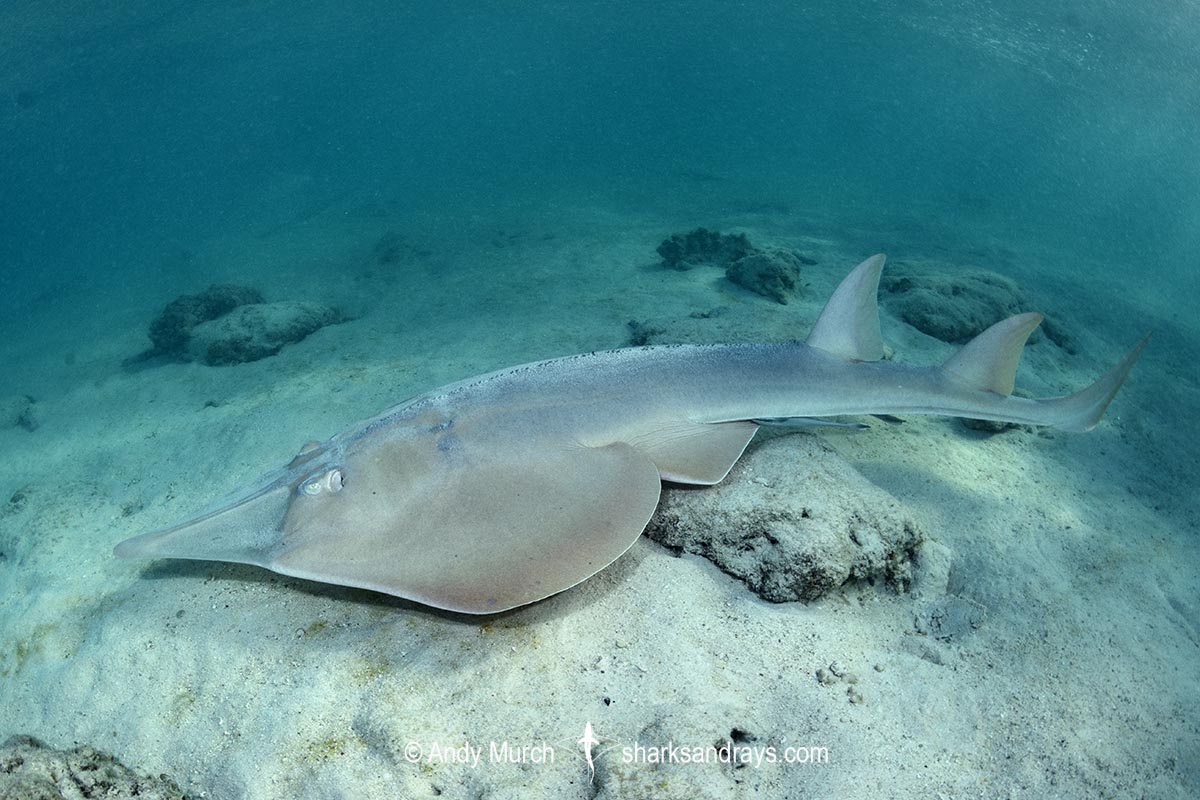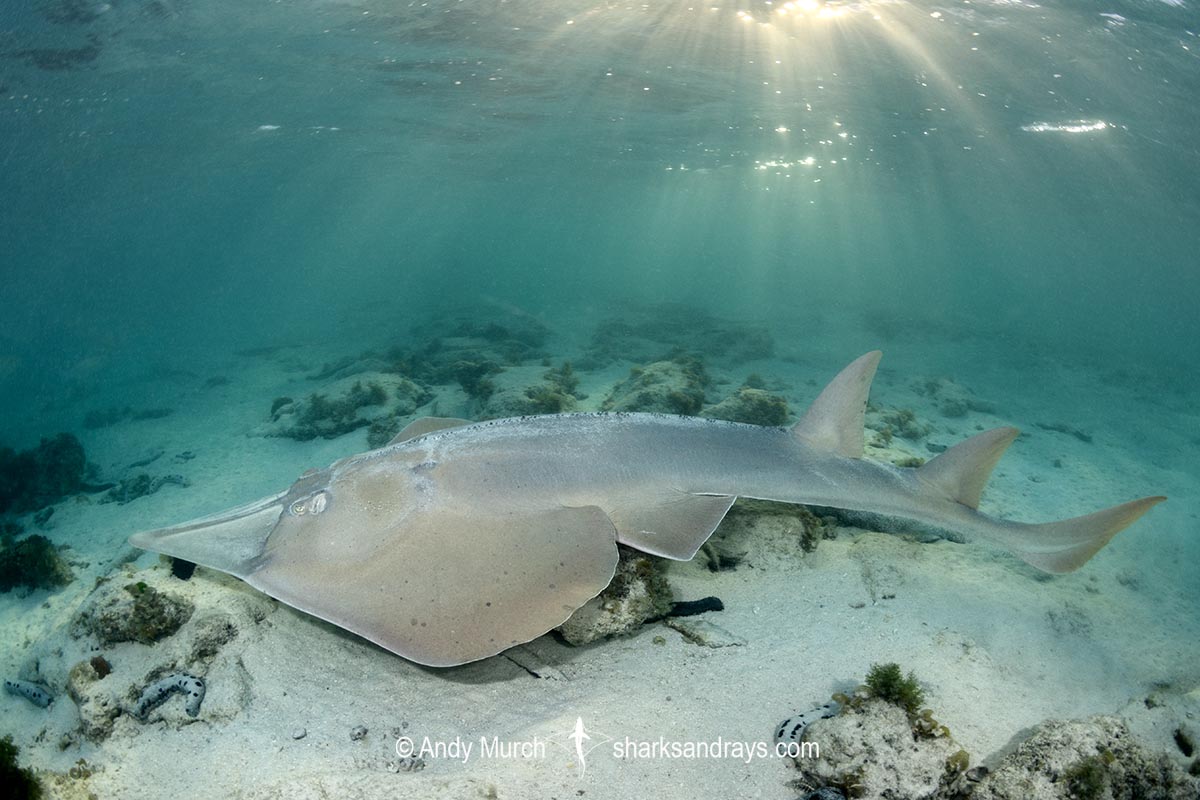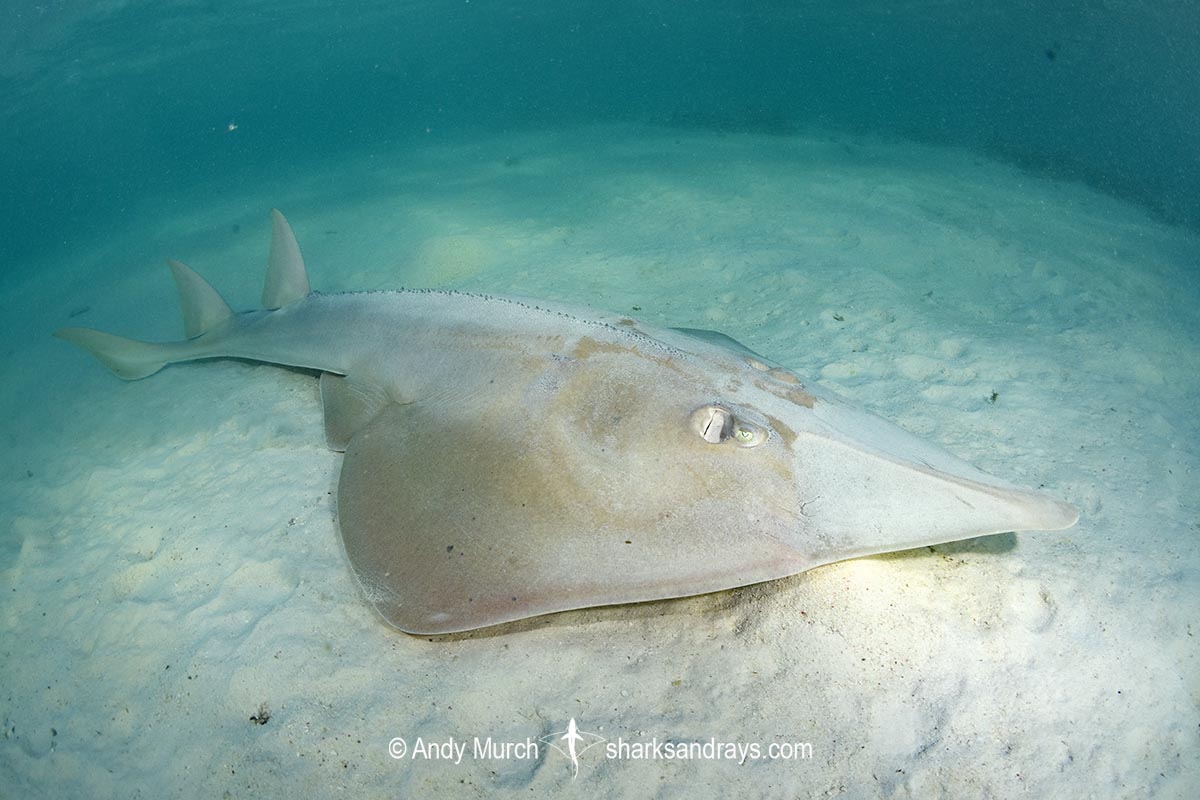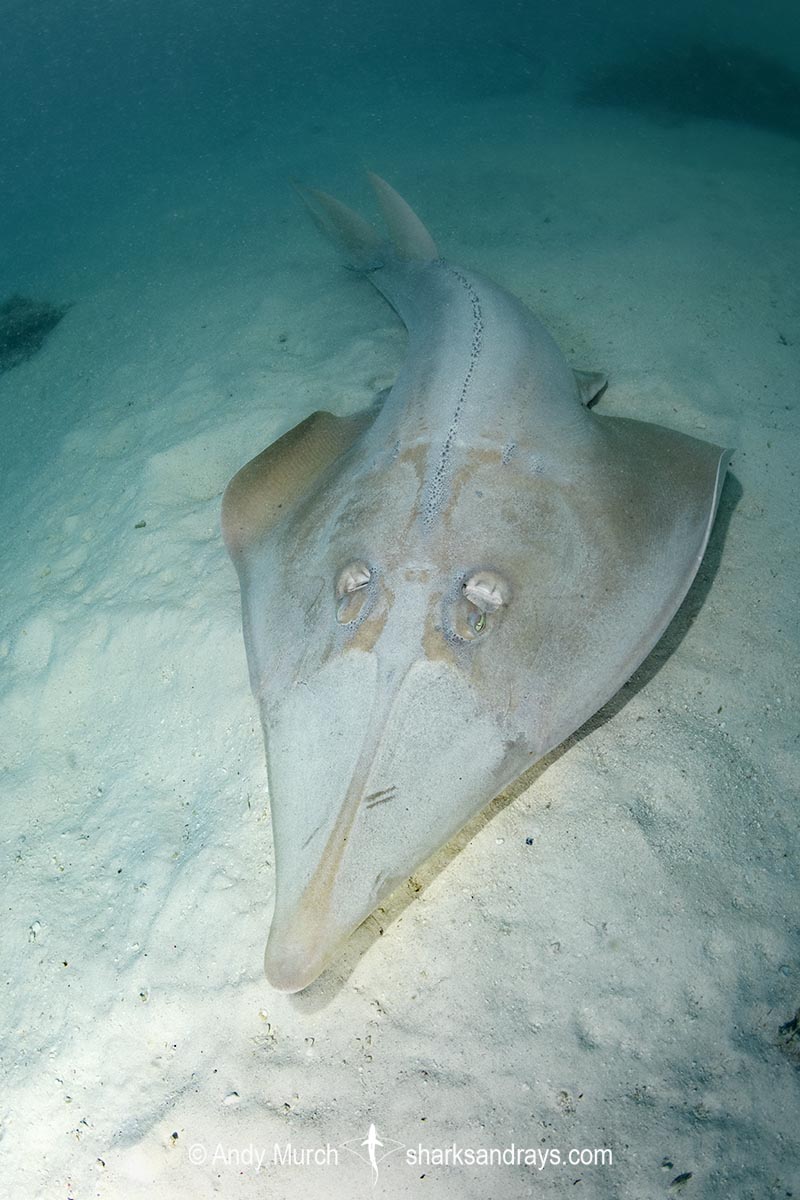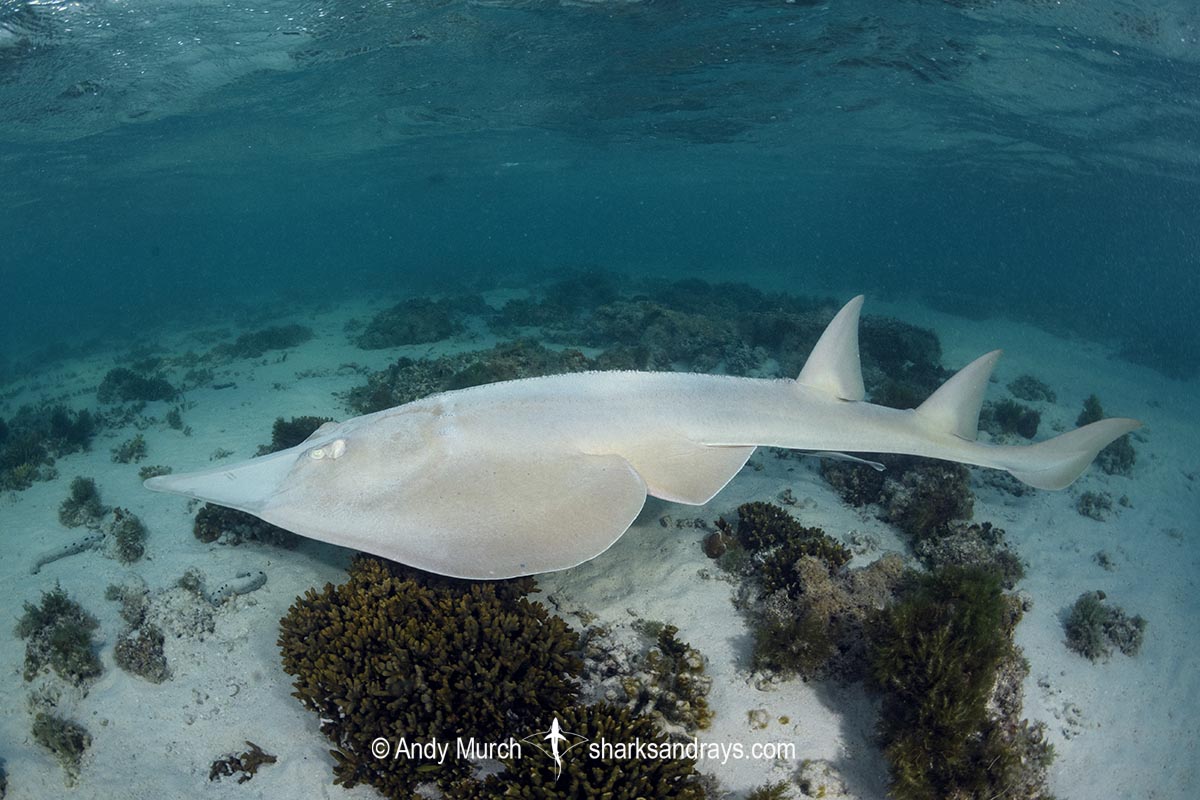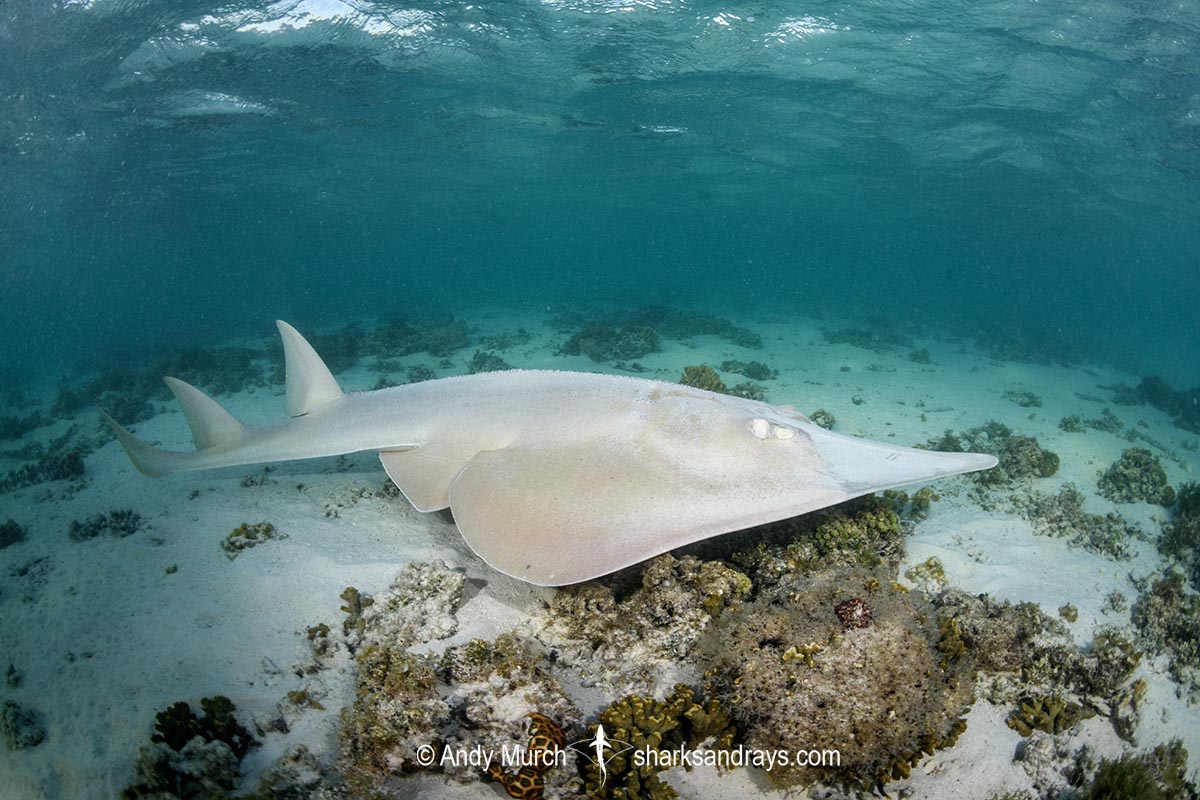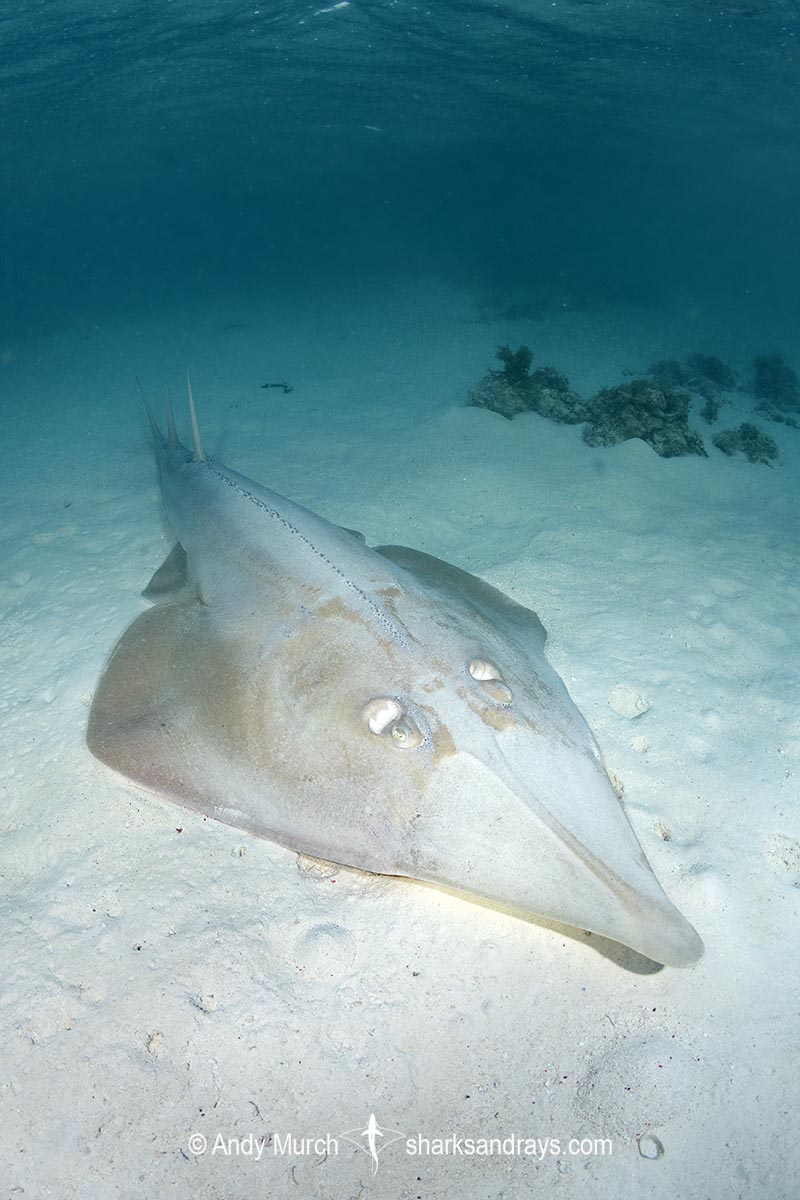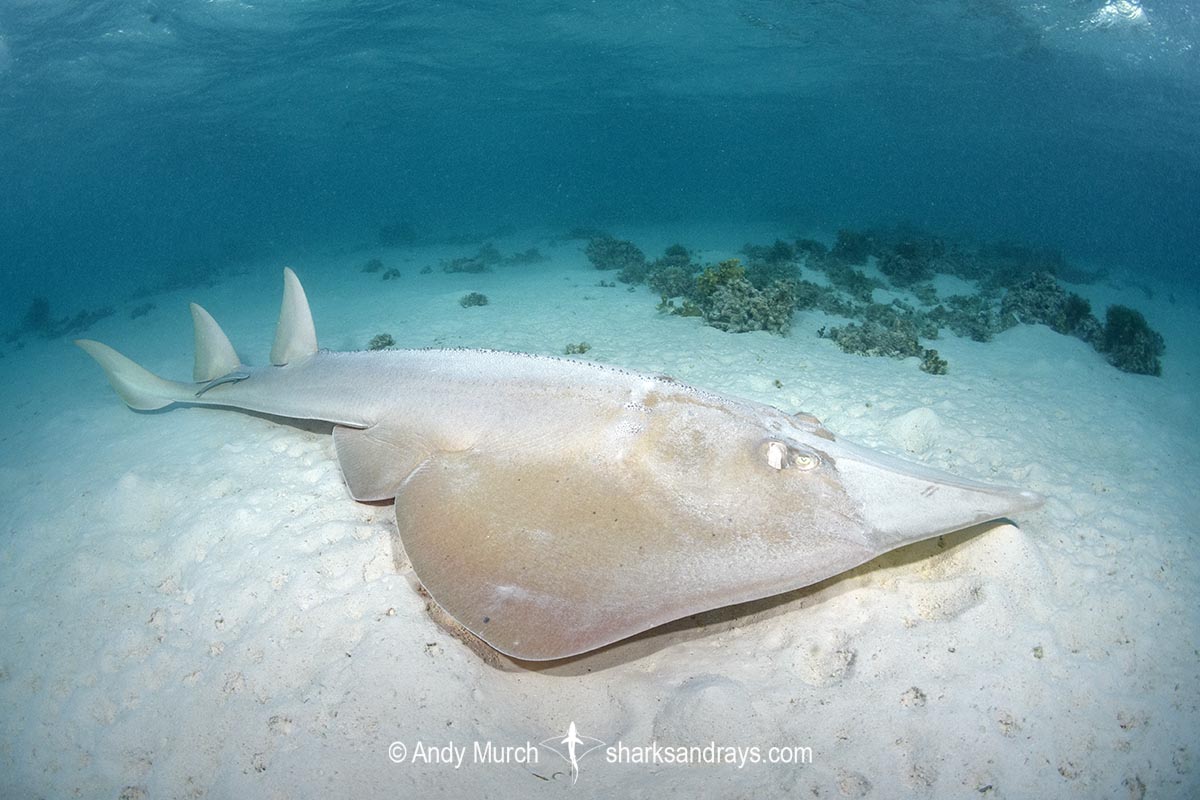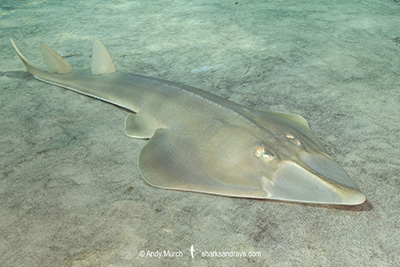Common names
Giant Guitarfish, Giant Shovelnose Ray, Common Shovelnose Ray.
Binomial
Glaucostegus typus.
Synonyms
Rhinobatos armatus, Rhinobatos batillium, Rhinobatos batillum, Rhinobatos typus, Rhinobatus armatus, Rhinobatus batillum, Rhinobatus typus.
Identification
A very large guitarfish with an acutely pointed snout. Snout tip sometimes slightly extended. Rostral ridges joined along most of snout length. Rostral cartilage posterior margin sharply demarcated. Eyes small. Snout length 6.1-7.8 x orbit length. Spiracles with two short, widely separated skin folds. Nasal flaps barely extend posteriorly beyond nostril opening.
Anterior margins of disc straight. Pectoral apices broadly rounded. Body completely covered in small denticles. Dorsal denticles larger than those on ventrum. Continuous band of slightly larger denticles either side of midline. Noticeably larger denticles present in patches on shoulders and around eyes. Continuous row of irregularly shaped thorns present along centreline from nape to tail.
Tail long, 1.3-1.5 x disc length. Dorsal fins relatively high and slightly falcate. Dorsal fin bases narrowly separated. Caudal fin narrowly triangular, without a defined lower caudal lobe.
Colour
Dorsum yellowish to greyish-brown and unmarked. Ocasionally with scattered small dark spots. Rostral cartilage pale. Ventrum mostly white.
Size
Maximum length at least 270cm. Size at birth ~38-40cm.
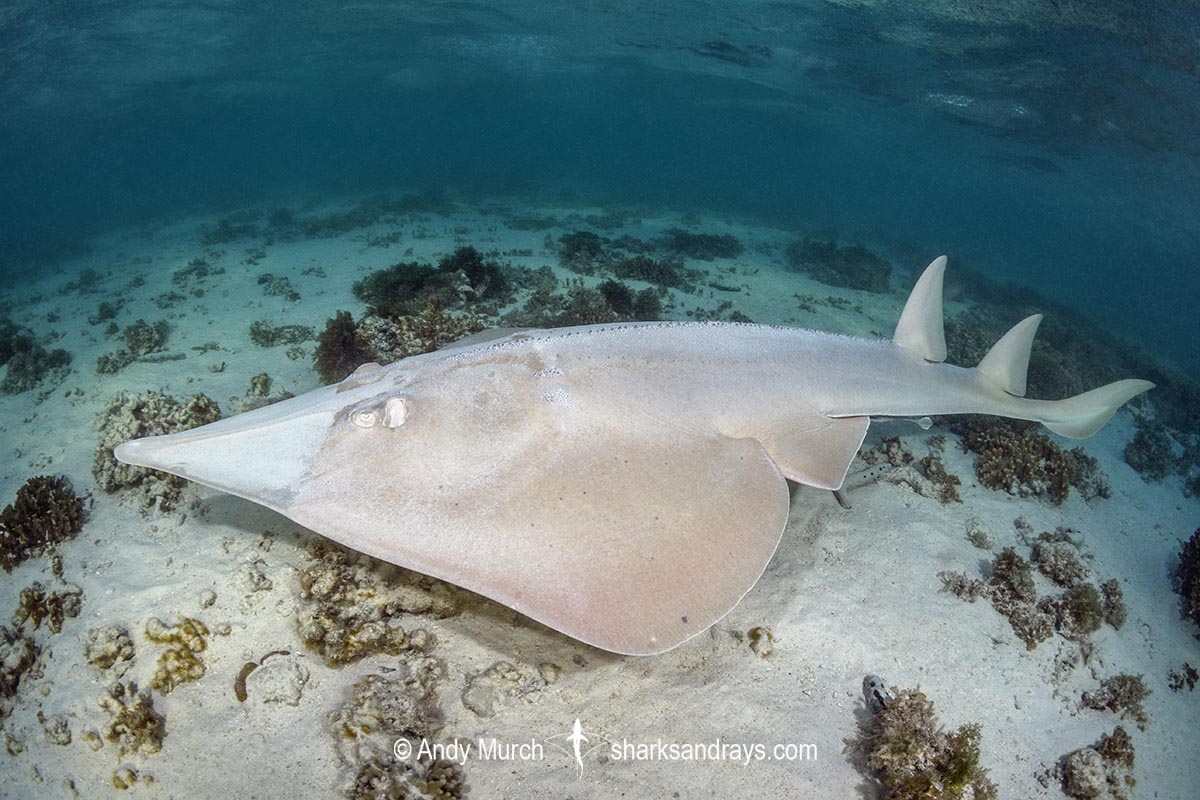
Conservation Status
CRITICALLY ENDANGERED
The Giant Guitarfish is a wide ranging species in the Indian Ocean. Unfortunately, giant guitarfishes in general are considered to have the best quality fins for sharkfin soup which has led to extreme overfishing. The only refuge for this species is in Australia where it is locally abundant in some areas, but this represents a small part of its overall range. Overall, Glaucostegus typus has declined by ~80% in the last 45 years and trend data indicates it is still decreasing.
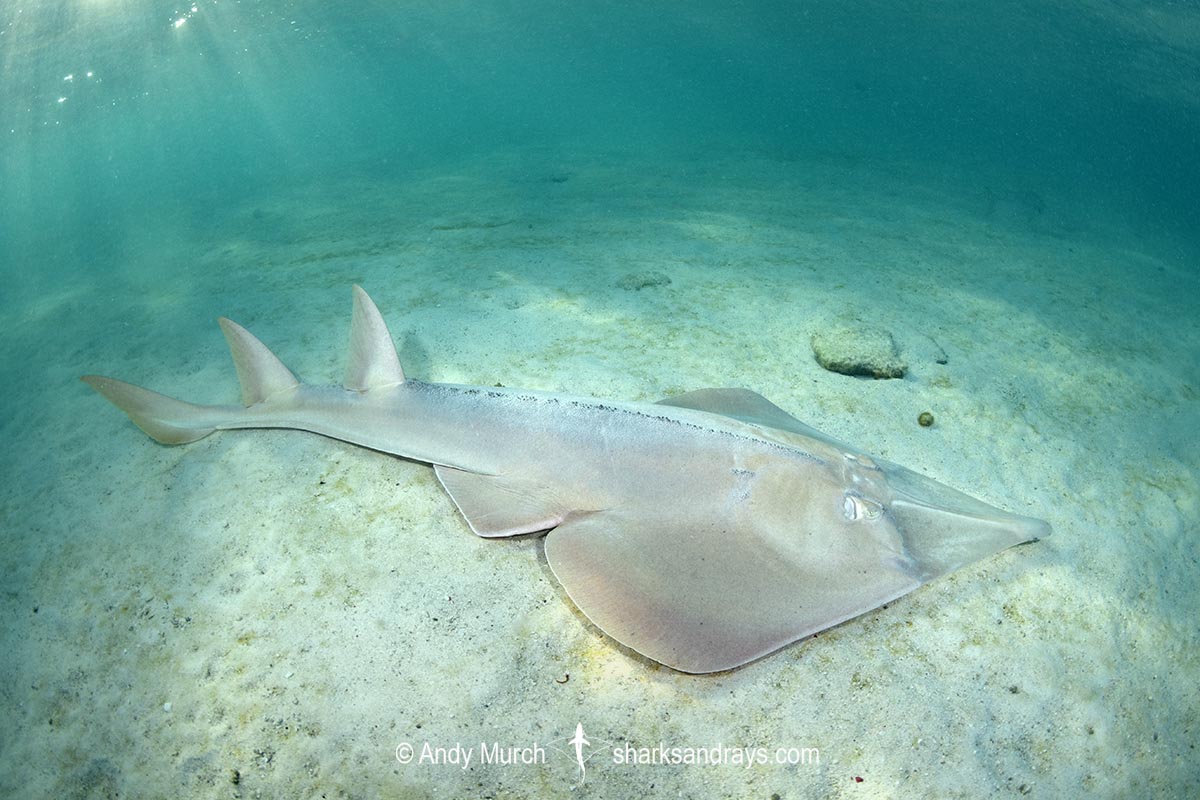
Habitat
Tropical to subtropical seas. Benthic on sandy substrates often adjascent to coral reefs. Found from the intertidal zone to at least 100m.
Distribution
Northern Indian Ocean from India to eastern China and throughout southeast Asia from Taiwan to PNG and tropical Australia.
Reproduction
Aplacental viviparous.
Diet
Diet consists mainly of benthic crustaceans; prawns and crabs.
Behavior
Enters very shallow water to feed. At Heron Island in Australia, giant guitarfish rest in small groups in very shallow water (<2m) often alongside other rays including cowtail and porcupine rays.
Reaction to divers
Somewhat skittish, but usually remains still for a short time when approached slowly.
Diving logistics
An excellent spot to see giant guitarfish is at Heron Island on the east coast of Australia. For the best encounters try snorkeling at high tide around the main jetty or at the opposite end of the island at Shark Bay. You should be able to find 5-10 giant guitarfish at either location. Scuba diving at Heron tends to be less productive than snorkeling because the rays are mostly found resting in very shallow water.
What’s new
View our full list of updates
Similar species
Halavi Guitarfish Distinguished by more westerly range in the Indian Ocean, smaller size, and shorter, more rounded snout.

